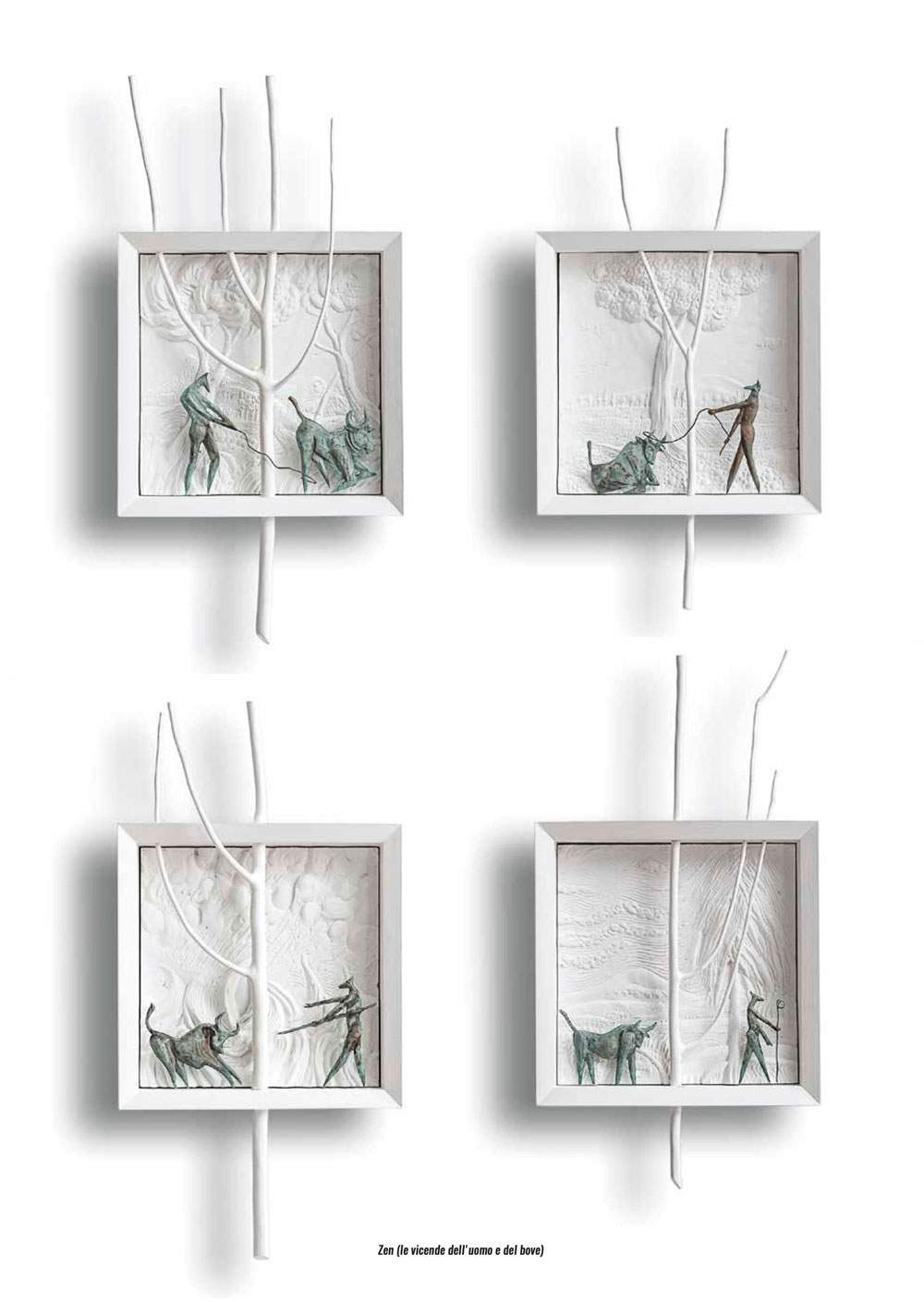From June 2 to July 22, 2020, the Palatine Chapel of the Maschio Angioino in Naples will host a double solo exhibition by Hermann Josef Runggaldier and Mario Ciaramella, entitled Spiritus Mundi.
Curated by Marco Izzolino and Carla Travierso, produced and conceived by Andrea Aragosa for Black Tarantella and promoted by the Department of Culture and Tourism of the City of Naples, the exhibition will be open free of charge from Monday to Saturday from 10 a.m. to 5 p.m. The exhibition brings together more than fifty sculptures of various sizes, in the round and in relief by the two artists. Underlying the work of both is the choice to live and work in their place of origin, Ortisei and Luzzano, respectively. The sculptors have remained connected to their land, their culture, making themselves an expression of it.
Hermann Josef Runggaldier and Mario Ciaramella bear witness to how there are areas in Italy where diversity has continued to develop, rejecting homologation. Runggaldier was born and lived in Val Gardena, Ciaramella in the Caudina Valley, two valleys surrounded by high mountains and shaped by waterways that have allowed the settlement of populations since ancient times. Places with very different climatic, biological and geological conditions, where, however, the process of anthropization of nature has followed a similar path for similar needs. In the art, as in the language, of these two valleys there is a secret and original expressive matrix that has come in latent form to the present day.
An anti-classical figurative matrix is present in both; a graphic and plastic language that is more immediate and universal, essential and synthetic in composing the figure and tending toward the abstract in differentiating the surfaces, in order to imitate the ways in which nature engraves and shapes the forms of the landscape.
All the sculptures exhibited by Mario Ciaramella (Luzzano di Moiano, 1956) - Veritas Crudelitatis - investigate or tell a different aspect of the relationship between man and nature. The natural environment in which he lives is, for man, the measure of all things, a constant reference. To his land the artist also owes the choice of materials he uses for his sculptures; materials that, as he says, “already as a child he learned to master: wood, clay, stone.” In the center is the wooden installation Cruel, which forms a kind of leitmotif of his exhibition section. Also on display are a series of ceramic Cloud Bearers sculptures and four series of metopes, mostly made of plaster.
Hermann Josef Runggaldier ’s (Ortisei 1948) focus on man in relation to the space of relationship is the essence of his entire artistic production. The body, in his works, is represented as archaic, mighty and strong, it is distant and imperturbable, it is archetypal of being, digeneration, of continuity.
In his desire to create a bodily metamorphosis, the artist goes so far as to stress shapes and sizes, he removes, modifies and creates inhuman kouroi that have an unlikely vital energy in the ease of gestures. His characters, though inanimate, reflect the intimate pain of being. They are images of the human essence, timeless figures in constant precarious balance between the freedom of the body and pain of the spirit.
For info: www.comune.napoli.it
Hours: Monday through Saturday from 10 a.m. to 5 p.m.
Free admission. It will be possible to book visits daily through the Si.ri.p.Arte online booking system.
Image: Mario Ciaramella, Zen (the vicissitudes of man and ox) (2019; plaster, wood, copper, color)
 |
| The Maschio Angioino hosts the double solo exhibition of Hermann Josef Runggaldier and Mario Ciaramella |
Warning: the translation into English of the original Italian article was created using automatic tools. We undertake to review all articles, but we do not guarantee the total absence of inaccuracies in the translation due to the program. You can find the original by clicking on the ITA button. If you find any mistake,please contact us.